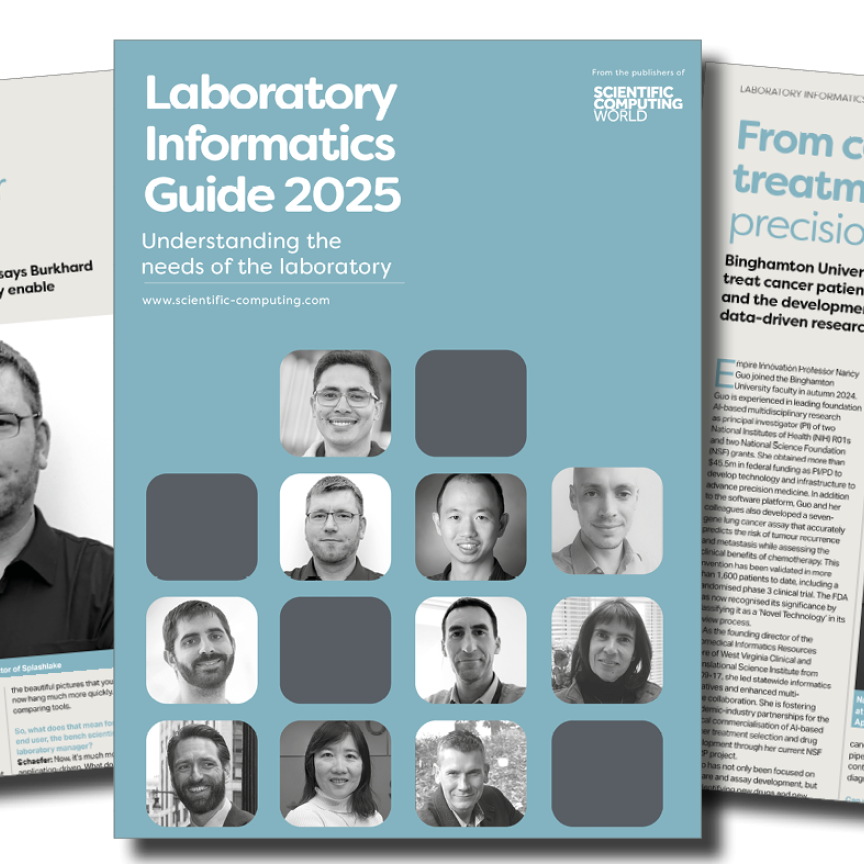Standardising analytical data is the key to unlocking AI-driven innovation in chemical and pharmaceutical research. Richard Lee, Director, Core Technology and Capabilities at ACD/Labs explores how overcoming data fragmentation can accelerate discovery, improve collaboration, and future-proof laboratory workflows.
Data serves as the foundation of modern scientific innovation, propelling advancements across drug discovery, development, and manufacturing. Despite its significance, the full potential of analytical data often remains untapped in the chemical and pharmaceutical industries.
Fragmentation and heterogeneity in data formats create significant barriers, limiting accessibility, integration, and reuse. For laboratory scientists, addressing these challenges through data standardisation is not merely a technical concern, it is a necessary step toward realising the potential of AI-powered discovery.
Breaking down data Silos: Standardisation for seamless integration
Analytical chemistry generates diverse datasets using techniques such as NMR, LC/UV/MS, and optical spectroscopy. However, much of this data is locked in proprietary formats specific to individual instrument vendors. This fragmentation makes it difficult to combine and analyse datasets, impeding efficient workflows and collaboration. Standardisation provides a solution by harmonising data into consistent formats, enabling compatibility and interoperability across systems. When combined with data normalisation, which translates data into unified ontologies, this process supports seamless integration of datasets from varied sources. For scientists in the lab, standardised data accelerates analysis, improves collaboration, and prepares datasets for deployment in AI and machine learning (ML) workflows.
Although data standardisation offers compelling advantages, its implementation is far from straightforward. Analytical data spans a broad range of applications, from identifying unknown compounds to ensuring product quality. This complexity is compounded by the rapid pace of technological innovation and the regulatory demands of the chemical and pharmaceutical industries. Legacy datasets create further problems, as many labs rely on historical data formats that are incompatible with modern systems. Navigating these challenges requires flexible standards that can accommodate both current and future needs while preserving the integrity of existing data.
Choosing between open and proprietary data formats is a critical consideration in the standardisation process. Open formats, often developed and maintained by standards bodies, facilitate data accessibility, interoperability, and long-term usability. However, proprietary formats offer highly specialised functionalities that are tightly integrated with advanced instrument technologies. While proprietary formats may restrict users to specific ecosystems, they often enable richer and more detailed data handling. Balancing the advantages of these formats requires strategic decisions, including adopting multi-format compatibility to ensure flexibility and preserving metadata integrity during data conversions.
The role of standardisation in AI/ML workflows
The integration of data standardisation into AI/ML workflows is essential for enabling advanced analytics and decision-making. AI/ML models require structured, machine-readable data, and standardised datasets provide the foundation for effective modeling, prediction, and insight generation. Formats like JSON, with its widespread compatibility and ease of integration into cloud-based platforms, offer significant advantages for AI-driven chemical informatics. However, domain-specific standards can also play a vital role by addressing the unique needs of chemical R&D, particularly in representing molecular structures and reactions. Ensuring the success of AI/ML workflows requires not only robust data standardisation practices but also comprehensive metadata management to maintain data provenance and regulatory compliance.
Standardised data unlocks numerous opportunities for innovation. By integrating datasets from multiple analytical techniques, such as NMR and LC/UV/MS, scientists can gain a more comprehensive understanding of complex chemical systems and studies. These integrated datasets enhance confidence in molecular characterisation, support the identification of unknown compounds, and enable detailed exploration of structure-property relationships to name a few examples. Beyond individual studies, standardised data also facilitates regulatory compliance by ensuring consistency and traceability, streamlining interactions with regulatory bodies.
The adoption of data standardisation further empowers laboratories to harness AI/ML for uncovering patterns, correlations, and insights from vast datasets. Solutions like ACD/Labs’ Spectrus® platform demonstrate the transformative potential of this approach by bridging proprietary and open data standards. With support for over 150 instrument formats, Spectrus ensures that both legacy and contemporary datasets are accessible, enabling scientists to unlock the full value of their data. This multi-format compatibility extends the lifespan of legacy instruments and facilitates the incorporation of emerging formats, ensuring a future-proof data infrastructure.
For laboratory scientists, the journey toward data standardisation represents an opportunity to reimagine how data is utilised. By adopting standardised data and integrating metadata management into their workflows, labs can build a foundation for AI/ML-powered innovation. Standardisation offers a pathway to greater productivity, enhanced collaboration, and the ability to derive meaningful insights from the data generated daily. The transformative potential of data lies not just in its collection but in its ability to drive discovery, and standardisation is the key to unlocking this potential. In an era defined by data-driven innovation, embracing standardisation is no longer optional—it is essential.
For more on this topic read our recent White Paper: Standardisation of Analytical Data: Best Practices


